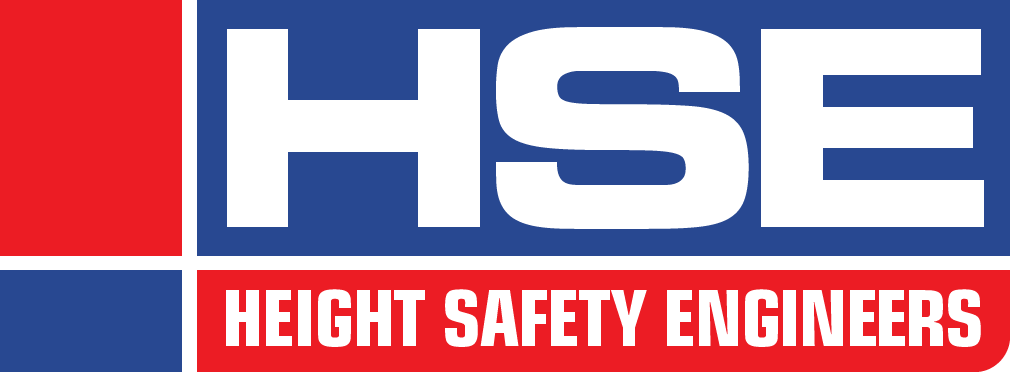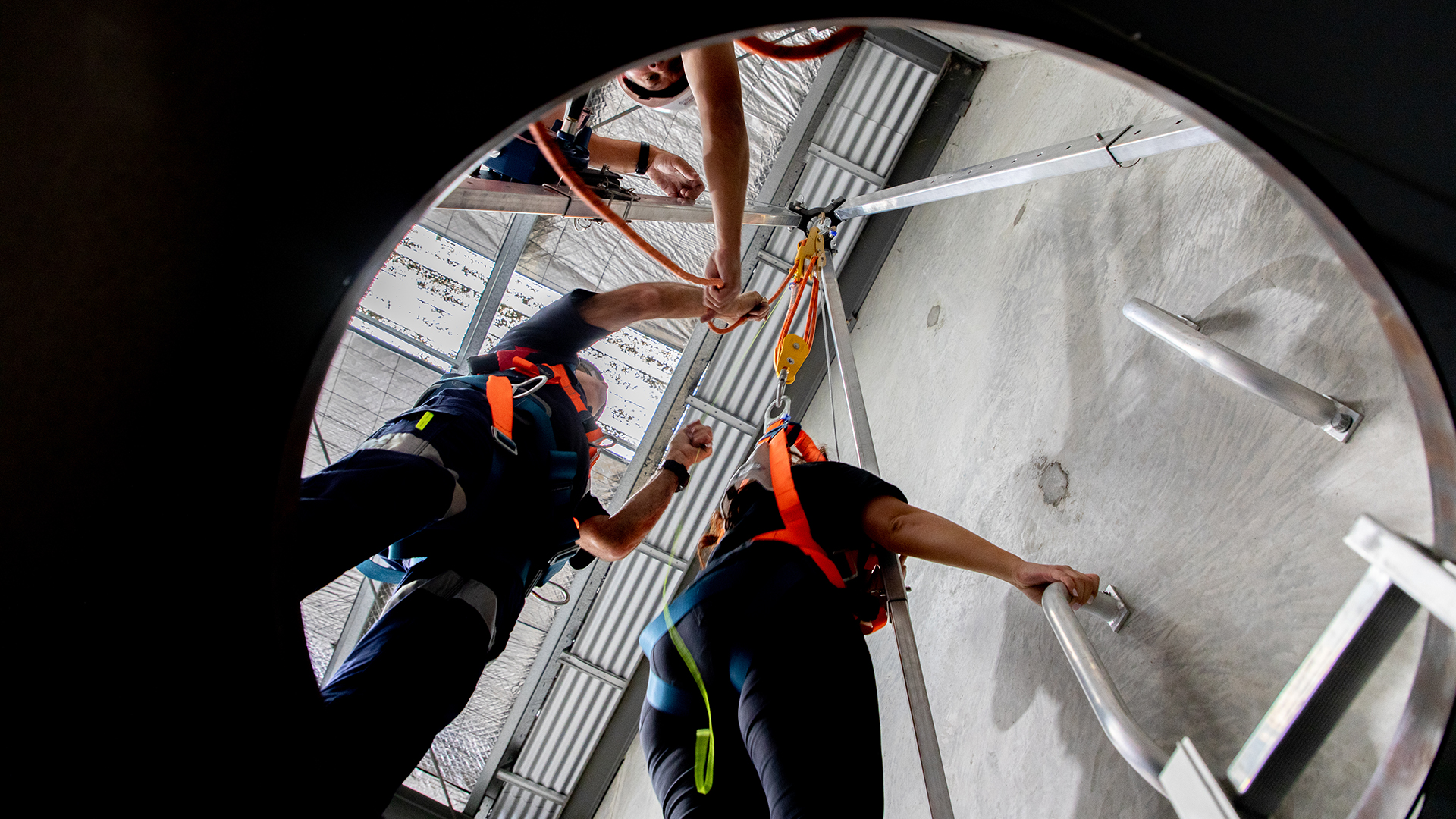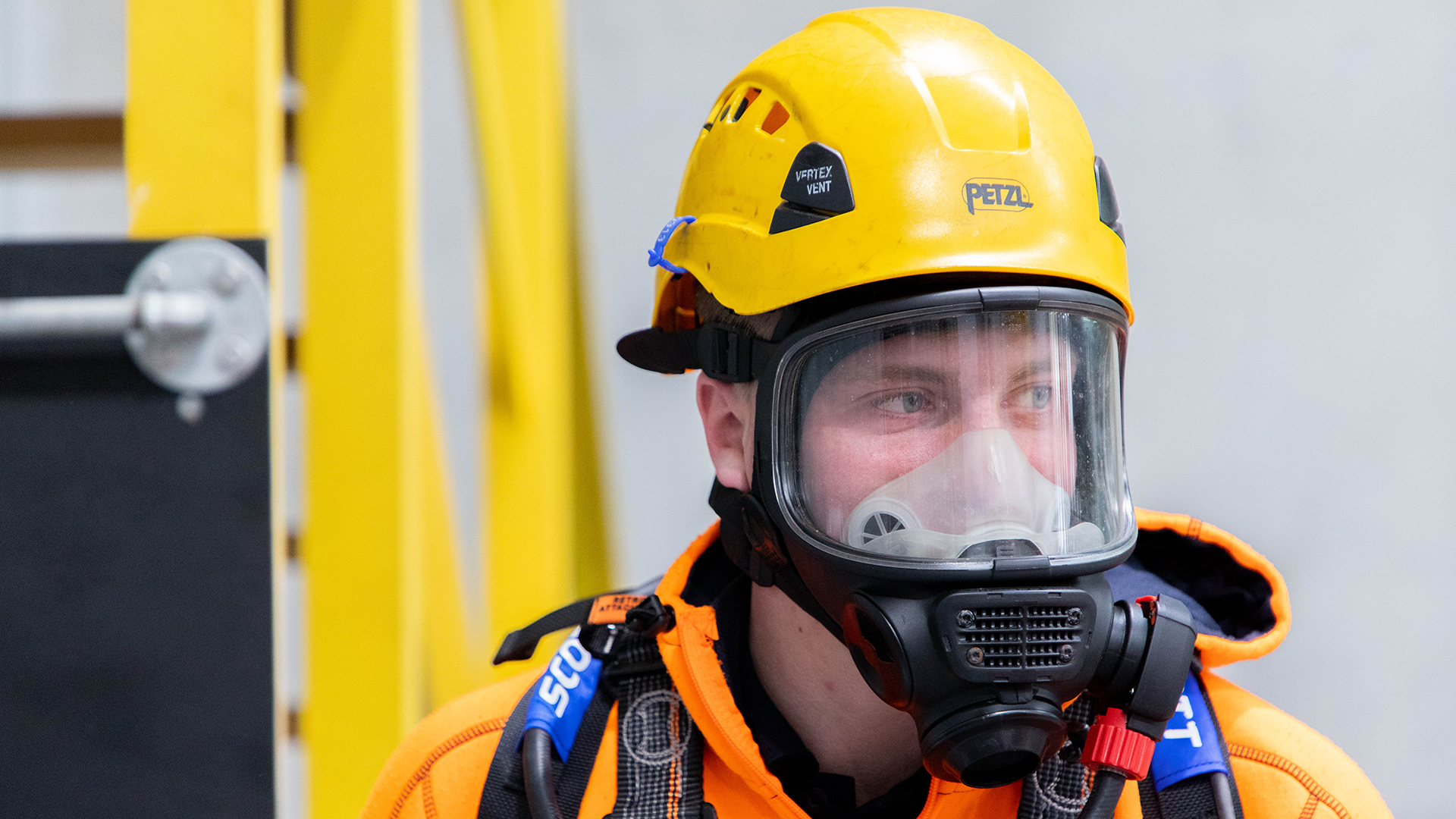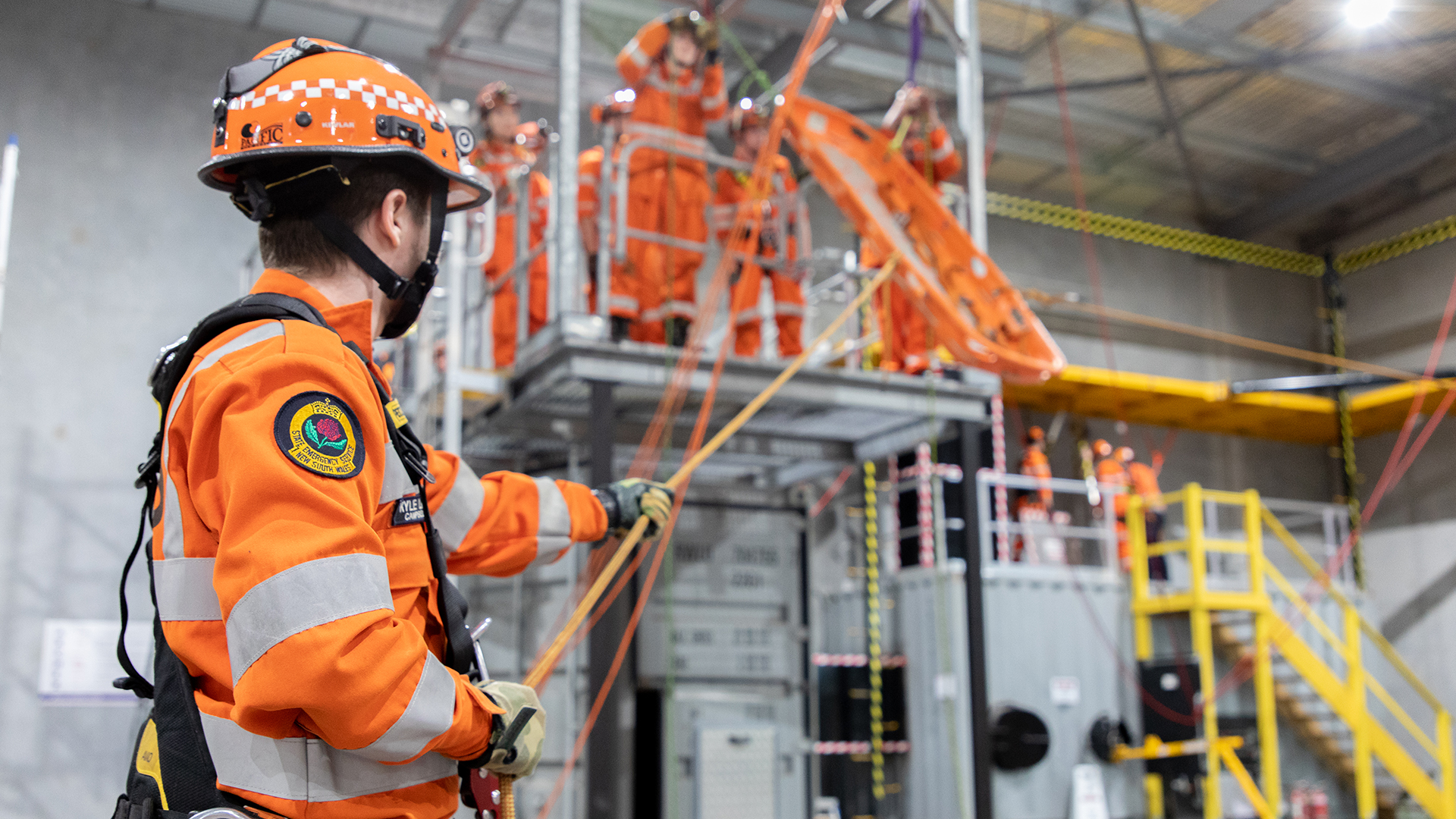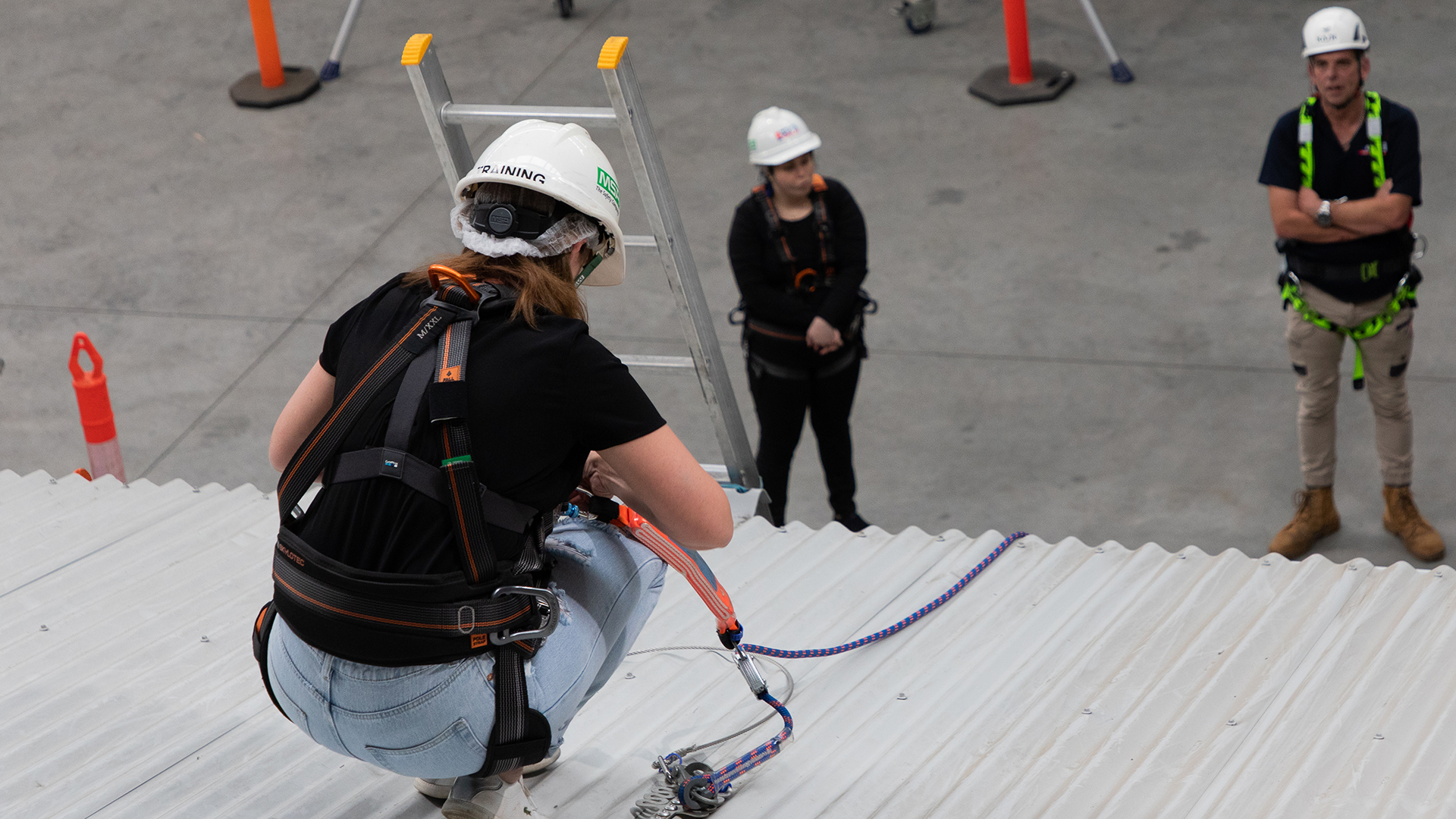Confined space extended skill set (two day)
The two-day course provides participants with a comprehensive understanding of how to correctly work in and around confined spaces, with the ability to tailor course content to suit specific aspects of safety.

Working in and around confined spaces presents a variety of workplace safety issues that need to be addressed in order to protect a worker from sustaining injuries or worse.
Confined space training held over two days, can be tailored to suit those supervising work being undertaken in and around confined spaces as well as those undertaking the work. By offering the ability to train in competencies that best suit participants’ needs, a training provider can make sure the course always provides the most relevant safety skills to participants.
Extended confined space training runs over two days. The first day gives participants the foundational knowledge required to work safely in and around confined spaces (this is the same as our confined space training course), with the second day introducing more advanced skills and knowledge to extend their abilities into areas such as supervisory work, use of breathing apparatus or participating in a rescue.

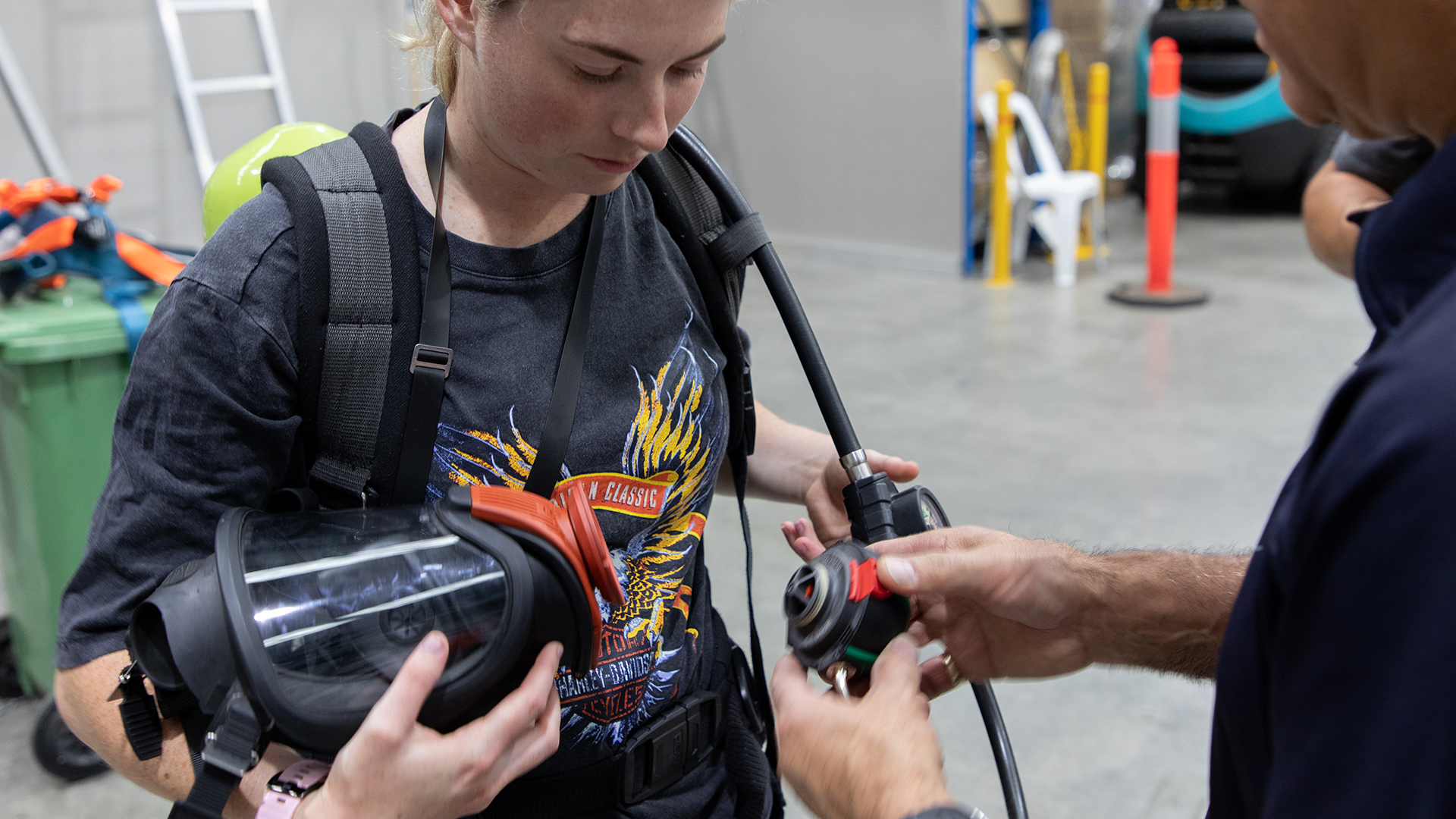
Course program
Day one - confined space training
The aim of this course is to provide students with a comprehensive understanding of how to correctly work in and around confined spaces. Following training; students will be able to identify the hazards associated with working in and around a confined space. Understanding of key legislation, duties of a standby person and understand the various categories of personal confined space entry and rescue equipment including their characteristics and limitations. Working with permits is an integral part of this course. Students will also be required to carry out pre and post-use inspections of all equipment.
Confined space training objectives and content
- Understanding of confined space legislation and standards
- Definition of a confined space
- How to perform risk assessments and control measures
- Confined space permits
- Atmospheric monitoring
- Confined space entry equipment – tripods, davits, RPDs, personal winches, retrieval SRLs, spreader bars and full body harnesses
- Demonstrate confined space entry, work positioning and rescue techniques
Day two - specialisation training (choose from one of these options)
Breathing apparatus
Including breathing apparatus in your two-day confined space training gives participants the skills and knowledge required to fit, operate and maintain breathing apparatus equipment. This allows them to work in irrespirable atmospheres, as defined by AS/NZS 1715:2009 Selection, use and maintenance of respiratory protective equipment.
Breathing apparatus objectives and content:
- Legislative requirements.
- Identification of hazards.
- Communication
- Work instructions and safe operating procedures (SOPs).
- Determine available working time in breathing apparatus.
- Conduct pre-donning checks and tests on breathing apparatus.
- Operate breathing apparatus.
- Conclude operations in accordance with procedures, including cleaning and make ready for operational use.
Please note that undertaking training in breathing apparatus requires participants be cleanly shaven. A clean-shaven face is necessary in order to correctly use breathing apparatus. Participants who are not clean shaven on the day of course may be unable to successfully undertake training.
Rescue
This option covers the skills required to participate in rescue operations as a member of a rescue team. The competency is often contextualised to cover specific rescue scenarios and when included as part of a two day confined space course this contextualisation focusses heavily on confined space rescues. It can use both pre-rigged rescue kits and advanced rope rescue equipment.
Rescue objectives and content:
- Capabilities and limitations of rescue equipment.
- Casualty handling techniques.
- Environmental hazards.
- Manual handling techniques.
- Organisation policies and procedures, including relevant legislation, rescue plans, OHS guidelines.
- Personal hygiene.
- Procedures for reporting injuries and accidents.
- Relevant legislative and regulatory requirements.
- Ropes and knots.
- Safety precautions.
Confined space supervisor
The aim of this course is to provide participants with comprehensive skills and knowledge required when undertaking the role and responsibility of supervising and managing confined space entry activities. The course covers such topics as defining and identifying a confined space, legal and company obligations, skills in leading and promoting workplace safety culture, and safety expectations for operator safety.
Supervisor objectives and content:
- Understanding of confined space legislation and standards.
- Definition and identification of a confined space.
- Preparation of confined space permits and development of safe operating procedures (SOPs).
- Carry out hazard identification, risk assessment and implement effective control measures.
- Test and maintain work processes and controls.
- Select appropriate emergency rescue equipment and liaise with external emergency services.
- Withdraw from the confined space and facilitate return to service activities.
About this course
The aim of this course is to provide students with a comprehensive understanding of how to correctly work in and around confined spaces. Following training, participants will be able to identify the hazards associated with working in and around a confined space, have an understanding of key legislation, know the duties of a standby person, and understand the various categories of personal confined space entry and rescue equipment including their characteristics and limitations.
Gas test atmospheres and working with permits is an integral part of this course. Participants will also be required to carry out pre- and post-work user inspection of all equipment.
Depending on the options chosen for the second day of training, participants will also learn how to prepare and issue permits, the role of a confined space work supervisor, how to correctly fit and use breathing apparatus, or how to perform a rescue from a confined space.
Duration: 2 days (16 hours)
Student/trainer ratio: 10:1
Course objectives and content
- Refer to course program above.
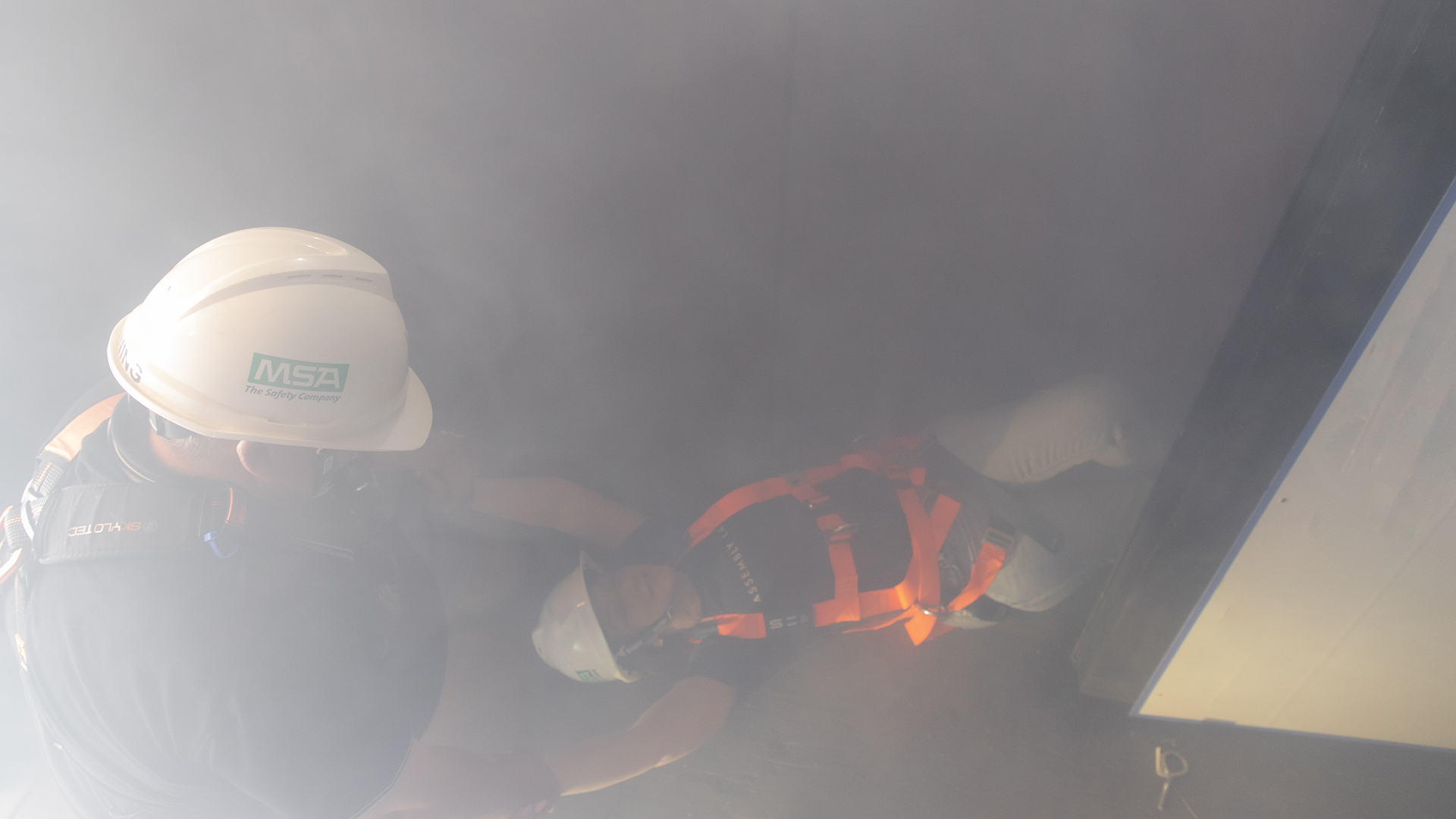
Qualifications for successful participants
Statement of attainments in:
RIIWHS202E Enter and work in confined spaces
MSMPER200 Work in accordance with an issued permit
MSMWHS217 Gas test atmospheres
And one of:
MSMWHS216 Operate breathing apparatus
PUASAR022 Participate in a rescue operation
RIIWHS401E Supervise work in confined spaces
Confined space extended skill set (two day) FAQs
According to Safe Work Australia, a confined space is determined by the hazards associated with the specific situation—not just because work is performed in a small space.
A confined space means an enclosed or partially enclosed space that:
- Is not designed or intended to be occupied by a person.
- Is at normal atmospheric pressure—or is designed or intended to be at normal atmospheric pressure—while a person is in the space.
- Is a risk to health and safety from:
- an atmosphere that doesn’t have a safe oxygen level
- contaminants like airborne gases, vapours and dusts that may cause injury from fire or explosion.
- Has harmful concentrations of any airborne contaminants.
- Is at risk of engulfment.
Confined spaces are commonly found in vats, tanks, pits, pipes, ducts, flues, chimneys, silos, containers, pressure vessels, underground sewers, wet or dry wells, shafts, trenches, tunnels or other similar enclosed or partially enclosed structures, according to model WHS regulations.
A space may become a confined one if work carried out in it could generate harmful concentrations of airborne contaminants.
This course is suitable for anyone who is required to perform any work or task where there is a need to enter and work in a confined space. This includes workers from entry level to senior management.
Some of the most common industries which require workers to complete this course include:
- Water and sewerage
- Oil and gas
- Construction, including electricians, builders and plumbers
- Mining
- Transport and storage
Our confined space training course has no designated ‘expiry date’ once a statement of attainment has been received. However, refresher courses are encouraged or sometimes required by individual employers.
Different employers will have different stipulations on how often confined space refresher courses are required. For example, a local council may require employees to complete a refresher course once a year, whereas a construction company may require it every three years.
For workers:
- Ability to readily identify risks and hazards for working in confined spaces and respond appropriately.
- Ability to swiftly, and competently, handle emergency situations.
- Receive skills which are transferable to many other industries and jobs.
For employers:
- Increase the skill set of your employees, thereby adding value to your business.
- Peace of mind that you are meeting legal obligations to keep employees safe under workplace health and safety regulations.
- You’ll save money in the long run by avoiding worse case scenarios.
No, but also yes.
Participating the second day’s training requires successful completion of the first day. Participants that do not successfully complete the first day of training may not be allowed to participate in the second day.
Please note that completing the breathing apparatus option requires that participants be clean shaven. Students who arrive for breathing apparatus training with facial hair will be unable to correctly use the required PPE.
Working or volunteering in the fire sector?
If you work or volunteer in the fire sector (defined as those sections of government departments, statutory authorities or organisations that have responsibility under jurisdictional arrangements for the delivery of firefighting and fire management services) you must have completed HLTAID011 Provide first aid successfully in order to be issued a statement of attainment.
